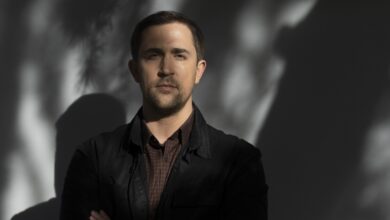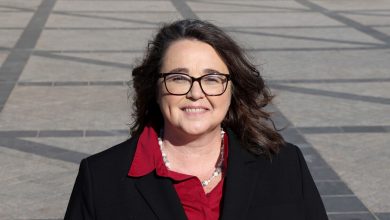After a Professor’s Killing, a University Asked Its Campus About Safety. Here’s What People Said.

[ad_1]
“Should have canceled football.” “Evacuation was disorganized.” “I was terrified I would not be able to leave campus and go home.” “Do not add more police.”
Those were some of the responses to a survey conducted by the University of Arizona last fall. They reveal the safety concerns and priorities of students, faculty, and staff soon after the killing of a professor on campus last year.
The university sent the survey to all students, faculty, and staff on October 17, 2022, less than two weeks after Thomas Meixner, a professor of hydrology and atmospheric sciences, was shot and killed while walking to his office. A former graduate student, Murad Dervish, was arrested and charged with his murder.
The survey asked for community members’ “thoughts, concerns, and suggestions regarding campus safety.”
“Each comment will be read, and every suggestion will be considered,” President Robert C. Robbins wrote in an email to the campus.
The Chronicle obtained a document summarizing the survey responses with a public-records request. The university declined to provide the full survey responses, writing that “disclosure of these records is contrary to the best interests of the state.” The summary includes some quotes taken directly from the survey, which drew nearly 1,200 responses. The university enrolls 51,000 students and employs 16,000 faculty and staff members.
Students, faculty, and staff didn’t know what to do. Lockdown or evacuate? Was it safe on campus or not?
The 13-page summary illustrates the state of campus safety today, when shootings are a constant concern, and even though 16 years have passed since a mass shooting took 33 lives at Virginia Tech, students, faculty, and staff are begging their institutions to do more to keep them safe. The University of Arizona has indeed made many changes in the months since the killing, some of which mirror ideas recommended in the survey.
The fearful tenor of many people’s responses, painting a picture of a campus reeling from trauma, also serves as a grim reminder of the high stakes facing colleges to get campus safety right.
Changes Made
The document captures frustration that the university hadn’t done more to prevent the shooting, and that officials had failed to communicate effectively with the campus before, during, and after the incident.
“Students, faculty, and staff didn’t know what to do,” one comment reads. “Lockdown or evacuate? Was it safe on campus or not? Need better communication and clearer instructions.”
Several comments describe the harrowing experience of waiting for information as the situation unfolded.
“After the shots were fired, we were in the building for over 40 minutes waiting for police to come and escort us out (still not knowing from the rooms what had happened, who was shot, or where Dervish was),” one comment says. According to the official timeline, shots were fired at about 2:04 p.m. at the John W. Harshbarger Building, and it was evacuated by 2:43 p.m.
Steve Patterson, the university’s interim chief safety officer, emphasized that the survey had been conducted at a time when emotions were fresh for the community.
“You can almost feel the anxiety in that,” Patterson said.
Still, faculty, staff, and students have continued to raise similar complaints. In February, an ad-hoc faculty committee released a draft report that said the university had “consciously and consistently” ignored the community’s safety concerns.
The suspect, Dervish, had threatened Meixner and other faculty members in the department of hydrology and atmospheric sciences for more than a year. Faculty members felt that the administration had failed to respond adequately to their cries for help, prioritizing the suspect’s privacy over campus safety, until tragedy struck.
In March, a university-commissioned report by the PAX Group, a consulting firm, found that campus officials had missed many opportunities to intervene before Dervish allegedly killed the professor. The report cited a dysfunctional threat-assessment process and poor communication across departments. Robbins, the president, accepted responsibility for the mistakes. The PAX Group recommended 33 steps to improve campus safety that are now being put into place.
Phil Andrew, principal of the PAX Group, said the survey’s feedback had served as a helpful jumping-off point for interviewing people across campus. And now, the university says, many of the survey respondents’ suggestions are coming to fruition.
In addition to comments about the crisis response, participants in the survey suggested a host of changes related to threat assessment, violence prevention and training, and post-incident support.
In the next two to three years, I want UA to be considered the benchmark when it comes to safety on college campuses.
Those include mandatory background checks for graduate workers, tighter security in buildings where there are known threats, trauma kits in campus buildings, required active-shooter training for faculty and students, campuswide notification about “threatening individuals,” and increased mental-health support for employees and students.
The university is in the process of installing locks on classroom doors, creating keyless access to buildings, and standardizing emergency alerts. Officials automatically enrolled all students and employees in the emergency-alert system, and expanded the university’s criminal-background-check process to include graduate assistants.
Some of the suggestions, Patterson said, are good ideas that simply haven’t been assessed yet.
“In the next two to three years,” Patterson said, “I want UA to be considered the benchmark when it comes to safety on college campuses.”
The Catalyst
Arizona is not alone in making sweeping campus-safety changes. Colleges increasingly must think through how to prevent and respond to gun violence.
“Colleges and universities have demonstrated a commitment to campus safety, to listening, to concentrating on it, to spending time and resources, to hosting conferences, to improving systems,” said Joseph Storch, senior director of compliance and innovation solutions at Grand River Solutions, a consulting firm, “that is likely unmatched in any other industry.”
But it often takes a tragedy to bring about widespread change. The vulnerabilities in an institution’s security apparatus may not become clear until they’re exploited.
In March, Michigan State University, where a mass shooting killed three students a month earlier, expanded the hours that keycard access is required to enter most buildings on campus. The university is also in the process of adding locks to more than 1,300 classroom doors.
A new Virginia law requires public colleges’ threat-assessment teams to obtain the criminal histories and health records of people determined to pose threats to others, and to notify the campus police, the local police, and local prosecutors of any threats.
The law was spurred by a November shooting at the University of Virginia that left three students dead. The suspect had apparently slipped through the cracks of the university’s threat-assessment process.
Threat-assessment teams themselves spread across higher education following the 2007 massacre at Virginia Tech. In that case, the student gunman’s mental-health issues had concerned some people on campus, but that information wasn’t shared.
As Arizona overhauls its protocols, Hilary A. Houlette, a doctoral student in higher education at the university, said she hoped it would keep accessibility in mind for issues like building evacuations and alerts.
“What are the considerations for folks who use a mobility device?” Houlette said. “We need to be thoughtful about the needs of different communities.”
One persistent challenge is that people on a campus don’t always agree on the best course of action. Often those disagreements hinge on conflicting definitions of safety.
In the Arizona survey, some call for more police patrols, but one asks that the police presence not be increased, over concerns about racial bias. (A university spokeswoman told The Chronicle there are no plans to increase police patrols.)
Other institutions have also been grappling with that tension recently, as they try to secure their campuses against gun violence. George Washington University’s police department, for example, is arming some officers this fall for the first time, despite student concerns about brutality.
That police departments often fail to respond appropriately to credible threats — as was the case with the University of Arizona Police Department, according to the PAX Group report — makes community members only more fearful that someone could come onto campus with the intention of committing violence, said William Pelfrey Jr., a professor in Virginia Commonwealth University’s L. Douglas Wilder School of Government and Public Affairs who studies public safety.
“If we look back over the history of campus, university, and high-school shootings,” Pelfrey said, “there’s a lot of evidence pointing to the shooter as a problematic actor … as a dangerous person, as somebody who represents a valid threat that law enforcement should take seriously.”
High Stakes
Like George Washington University, some institutions that haven’t faced tragedies of their own are looking to other campuses’ security failures and making changes.
The University of Minnesota may restrict access to 70 public buildings in an effort to make the Twin Cities campus safer. In a Board of Regents meeting on Wednesday, a senior administrator said other campuses’ recent experiences with violence had influenced the university’s thinking.
The Michigan State shooting “sort of tells us to close as many buildings as we can from outsiders,” said Myron Frans, the Minnesota system’s senior vice president for finance and operations, according to Minnesota Public Radio. “And on the other hand, it’s a public university, and we want access — we want people there.”
Restricting access to an ID card for students, faculty, and staff would cut off the campus in some ways.
The 70 buildings would be those with “limited need for public use,” MPR reported.
It’s a tough balance to strike. Reading over the Arizona survey responses, Pelfrey said security-card access to every building would be “almost untenable” because some campus buildings, like libraries, are intended to be “quasi-public.”
“Restricting access to an ID card for students, faculty, and staff would cut off the campus in some ways,” Pelfrey said, and would contradict part of a public university’s mission.
Patterson, Arizona’s interim safety chief, said keyless access is being installed in all “major” buildings on campus. But becoming an entirely closed campus is not on the table.
“The University of Arizona is an open campus and will always be an open campus,” Patterson said. “With that, does that pose some challenges? Sure. But we’re working through those.”
Leila Hudson, chair of the university’s Faculty Senate, said campus safety is in a better place now than it was before the killing.
“There’s still more work to be done,” she said. “And honestly, I don’t think that our continuing vulnerabilities are that different from those in any other large, open, inclusive campus. And we’re probably now better than some.”
[ad_2]
Source link






